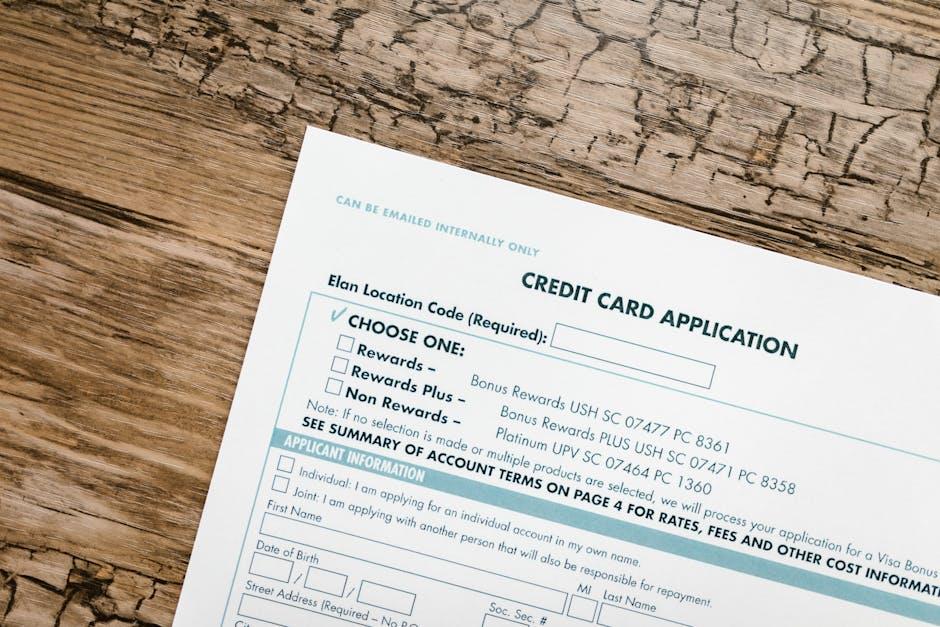Navigating the world of small business financing can often feel like an overwhelming endeavor. With countless options available, the process of applying for a small business loan online presents both opportunities and challenges. In this digital age, where convenience meets complexity, mastering the art of online loan applications is essential for any entrepreneur seeking to transform their vision into reality. From understanding the various types of loans to crafting compelling applications that resonate with lenders, this guide will provide you with the tools and insights necessary to successfully secure funding for your business. Whether you’re a seasoned entrepreneur or just starting your journey, the right knowledge can make all the difference in turning your aspirations into achievements.
Understanding the Digital Landscape of Small Business Loans
Navigating the digital landscape of small business loans can feel daunting, especially with a plethora of options and lenders vying for your attention online. Understanding the basics of this environment is essential for making informed decisions that align with your business needs. The digital era has transformed the way loans are accessed, but knowing how to approach it effectively is key.
First and foremost, let’s explore the different types of online lending platforms available:
- Traditional Banks: Many well-established banks offer online applications for small business loans. These include institutions like Bank of America and Wells Fargo.
- Online Lenders: Companies like Fundera, LendingClub, and Kabbage exclusively operate online and typically provide a faster turnaround time compared to traditional banks.
- Credit Unions: Local credit unions often have attractive rates and terms, making them a viable option for small businesses.
- Peer-to-Peer Lending: Platforms such as Prosper connect borrowers directly with investors, potentially offering lower rates and more flexible terms.
When applying for a loan online, several important factors should be considered:
- Application Process: Most online lenders offer a streamlined application process that can be completed in minutes. This often includes filling out basic business information and uploading necessary documents.
- Eligibility Criteria: Lenders typically assess credit scores, annual revenue, and business history. A score of 700 or above is generally considered favorable.
- Interest Rates: Online lenders can vary significantly in terms of rates. While some may offer competitive rates, others might have higher APRs due to less stringent eligibility criteria.
- Loan Terms: Familiarize yourself with repayment terms, which can range from months to several years, thereby affecting your cash flow.
| Loan Type | Average Interest Rate | Typical Loan Amount | Repayment Period |
|---|---|---|---|
| Traditional Bank Loans | 4% – 6% | $25,000 – $500,000 | 1 – 10 years |
| Online Lenders | 6% – 30% | $5,000 – $500,000 | 3 – 36 months |
| Credit Union Loans | 3% – 8% | $10,000 – $250,000 | 2 – 7 years |
| P2P Loans | 5% – 25% | $1,000 – $35,000 | 3 – 5 years |
Additionally, as you navigate these options, consider the following resources that can simplify your search:
- Small Business Administration (SBA): Provides extensive information on financing options specifically tailored for small businesses, including government-backed loans.
- Online Comparison Tools: Websites like NerdWallet and Fundera allow you to compare rates and terms across multiple lenders.
- User Reviews: Checking customer feedback on platforms like Trustpilot can help gauge lender reliability and service quality.
is about matching your needs with the right lender while navigating the myriad of options available. Equip yourself with knowledge and choose the path that best supports your business growth.

Crafting a Compelling Loan Application That Stands Out
When applying for a small business loan, crafting a compelling application is crucial to capturing the attention of lenders. Here are essential elements to consider to make your application stand out:
- Clear Purpose Statement: Start with a concise description of why you need the loan. Clearly outline how the funds will be used, whether for expansion, buying equipment, or managing cash flow.
- Solid Business Plan: A well-structured business plan demonstrates your understanding of the market. Include sections on:
| Section | Description |
|---|---|
| Executive Summary | Brief overview of your business, including objectives. |
| Market Analysis | Analysis of your target market and competition. |
| Revenue Model | How you plan to make money. |
| Management Structure | Who is running your business and their qualifications. |
| Financial Projections | Forecasted income, expenses, and cash flow. |
- Strong Financial History: Demonstrate your business’s financial stability with clear records. Include:
| Document | Purpose |
|---|---|
| Tax Returns | Prove past income and business health. |
| Profit and Loss Statements | Show earnings versus expenses. |
| Cash Flow Statements | Demonstrate your ability to manage cash effectively. |
- Personal and Business Credit Scores: Understand how your credit scores impact your application. Aim for a score above 700 for better rates and terms.
- Collateral: Offering collateral can strengthen your application. Common assets include real estate, equipment, or inventory.
- Professional Presentation: Ensure your application is free of errors and professionally formatted. Use clear, professional language throughout.
By focusing on these key areas, you can craft a compelling loan application that positions your business as a worthy investment and enhances your chances of securing the financing you need.

Navigating Financial Documentation and Requirements Effortlessly
When preparing to apply for a small business loan, understanding the necessary financial documentation and requirements is crucial. This ensures a smooth application process and enhances your chances of securing the funding you need. Here’s a practical guide to help you navigate the essentials.
Key Financial Documents You Will Need:
- Business Plan: A detailed plan outlining your business goals, strategies, and how you intend to use the loan to grow your business.
- Personal and Business Credit Reports: Lenders will review your creditworthiness. Ensure you check your credit scores and correct any discrepancies.
- Financial Statements: Include your profit and loss statements, balance sheets, and cash flow statements for the past two years to show your business’s financial health.
- Tax Returns: Provide personal and business tax returns for at least the last two years. This helps lenders verify your income and tax obligations.
- Legal Documents: Prepare any legal documents that reflect your business structure (e.g., articles of incorporation, partnership agreements). This establishes the legitimacy of your business.
Common Requirements Depending on the Lender:
- Minimum Time in Business: Many lenders require your business to be operational for at least one year.
- Collateral: Some loans may require personal or business assets to secure the loan. Be prepared to discuss what you can offer.
- Debt-to-Income Ratio: Lenders often look for a ratio that indicates you can manage your debts responsibly, usually below 43%.
- Interest Rates and Fees: Understand the interest rates being offered and any associated fees. These can greatly impact your overall repayment amount.
| Document | Description |
|---|---|
| Business Plan | A comprehensive outline of your business goals and strategies. |
| Credit Reports | A summary of your credit history, important for assessing your risk profile. |
| Financial Statements | Reports that show your business’s financial performance and stability. |
| Tax Returns | Proof of income and tax compliance for the past two years. |
| Legal Documents | Proof of business structure and compliance with laws. |
By gathering these documents ahead of time and being aware of the requirements, you’ll be well-prepared to tackle the loan application process confidently. Remember, being organized and thorough will not only instill confidence in lenders but also position your business for future success.

Leveraging Online Tools for a Smooth Loan Process
When navigating the world of small business loans online, utilizing the right tools can significantly enhance the efficiency and effectiveness of your application process. Here’s how to leverage online resources to ensure a smooth and successful loan journey:
- Loan Comparison Websites: Use platforms such as NerdWallet or LendingTree to compare different loan options, interest rates, fees, and terms from multiple lenders.
- Financial Calculator Tools: Make use of online calculators to project monthly payments and total interest costs. Tools like the Bankrate Mortgage Calculator can help you estimate your loan repayment amounts accurately.
- Document Management Systems: Implement cloud-based services such as Google Drive or Dropbox for easy access and sharing of necessary documents. This ensures that all your paperwork is organized and readily available when needed.
- Application Portals: Familiarize yourself with various lenders’ websites. Ensure you’re comfortable navigating their online application forms, which can often be filled out and submitted electronically. Many banks, like Bank of America and Wells Fargo, offer comprehensive guides to help you through this process.
- Credit Monitoring Services: Use credit monitoring tools like Credit Karma to analyze your credit score. Understanding your score can help you identify areas for improvement before applying, enhancing your chances of loan approval.
- Insurance and Protection Tools: Research insurance options to protect your assets. Providers such as Progressive and State Farm offer plans tailored for small businesses.
Additionally, consider using communication tools like Zoom or Slack for virtual meetings with potential lenders. This can facilitate clear communication about your loan needs and expedite the overall process.
Ultimately, taking the time to utilize these online tools not only saves you time but also increases your chances of obtaining the best loan for your small business needs.

Closing Remarks
Embarking on the journey to secure a small business loan online can feel both exhilarating and daunting. As you navigate this path, remember that preparation is key. By understanding the requirements, enhancing your application, and leveraging the digital tools at your disposal, you empower yourself to not only access the funds needed but also to lay a strong foundation for your business’s future.
Persistence and patience are invaluable assets-don’t shy away from seeking guidance and analyzing resources available to you. As you master the art of securing financing, you’ll find that each step brings you closer to realizing your entrepreneurial dreams. So, take a deep breath, gather your documents, and get ready to propel your business forward. The financial support you seek is just a click away.














